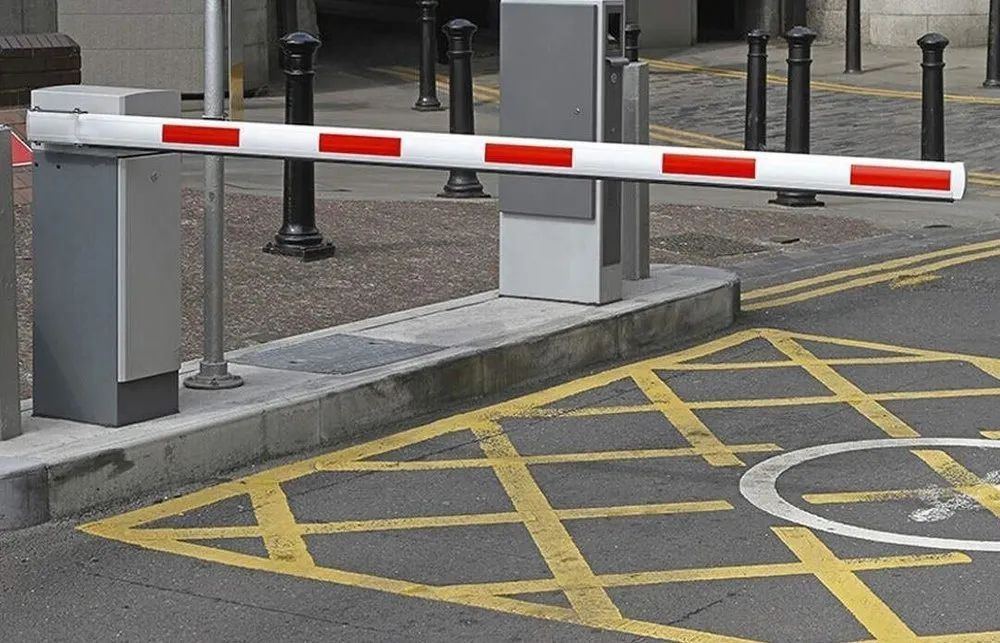Get in touch with us
Just leave your phone number with us and we’ll get back to you shortly!

Just leave your phone number with us and we’ll get back to you shortly!
In the modern world, managing and controlling vehicle access is a critical aspect of security and traffic management. One of the most effective tools for this purpose is the boom barrier system. This blog delves into what a boom barrier system and their types.
A boom barrier is defined as an automatically controlled or manually operated gate made of a horizontal bar hinged at a certain point. It is automated and mechanical, controlling traffic in and out of certain locations. This arm raises and lowers, granting or restricting access to a designated area. This comprehensive blog explores the concept of boom barriers, exploring their various types and the intricate workings of their underlying systems. You can make an informed decision when selecting the most suitable boom barrier for your specific needs.
Components of a boom barrier system encompass various integral parts that ensure its efficient operation and effectiveness in controlling vehicular access. Understanding these components is crucial for implementing different boom barrier types effectively, each tailored to specific security and traffic management needs. Here's a breakdown of the key components of a typical boom barrier system:
Boom Arm: The arm is the visible component that raises and lowers, typically constructed from lightweight yet robust materials like aluminium or steel. The arm's length determines the width of the opening it can control.
Support Post: This sturdy post provides a secure mounting point for the boom arm and houses the operating mechanism.
Drive Mechanism: The drive mechanism is the powerhouse of the system, responsible for raising and lowering the boom arm. This can be achieved through various methods, including electric motors, hydraulics, or even manual operation in simpler systems.
Control System: The control system acts as the brain of the operation, receiving signals from various sensors and triggering the drive mechanism to raise or lower the arm. This system can be integrated with access control devices like keypads, card readers, or loop detectors.
Safety Features: Modern boom barriers incorporate safety features such as photoelectric sensors, which detect obstructions and prevent the arm from closing on a vehicle or pedestrian.
Different types of boom barriers cater to varying needs across industries and applications. These barriers are designed with specific features like length, material, and operation methods, making them suitable for diverse environments from residential complexes to industrial sites. Understanding the different types of boom barrier systems helps in selecting the most effective solution for controlled access and security management. Let's delve into the most common configurations:
Manual boom barriers are operated manually by security personnel or attendants. They are cost-effective and suitable for low-traffic areas where human oversight is feasible.
Automatic boom barriers operate autonomously using electromechanical or hydraulic systems. They are equipped with sensors to detect approaching vehicles and can be integrated with access control systems for enhanced security.
RFID (Radio Frequency Identification) boom barriers use RFID technology for vehicle identification and access control. They allow seamless entry and exit for authorized vehicles equipped with RFID tags or cards.
Hydraulic boom barriers use hydraulic mechanisms to raise and lower the boom arm swiftly and smoothly. They are robust, durable, and suitable for high-traffic areas requiring frequent operation.
Electromechanical boom barriers operate using electric motors and gears to control the movement of the boom arm. They offer reliability and precision in operation, making them ideal for various commercial and industrial applications.
Boom barriers offer a range of benefits across various applications due to their versatility and effectiveness in managing vehicle access. Understanding these benefits is essential for choosing the most suitable option among different types of boom barrier systems based on specific security and traffic control requirements.
Security: Prevents unauthorized vehicle access, enhancing perimeter security.
Traffic Management: Regulates the flow of vehicles to prevent congestion.
Cost-Effectiveness: Reduces the need for manual security checks and personnel.
Durability: Designed to withstand harsh weather conditions and frequent operation.
Integration: Can be integrated with CCTV, alarms, and access control systems for enhanced security protocols.
Boom barriers find diverse applications across sectors where controlled access for vehicles is crucial. Understanding the boom barrier system allows for exploring its widespread use in enhancing security, managing traffic flow, and ensuring regulated entry and exit points in various environments.
Parking Lots: Controls entry and exit to manage parking spaces efficiently.
Toll Plazas: Facilitates automated toll collection and traffic management.
Industrial Facilities: Secures restricted areas and controls vehicle movement.
Residential Complexes: Enhances security for gated communities and apartment complexes.
Airports and Seaports: Manages vehicular access to restricted areas within transport hubs.
Boom barriers are crucial for traffic control and enhancing security across various sectors. Awareness of their types aids stakeholders in implementing effective traffic management and security systems. These barriers significantly improve operational efficiency and safety, whether manual, hydraulic, or electromechanical. They are integral to modern access control, providing secure entry and exit points with advanced security features.